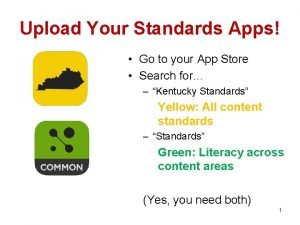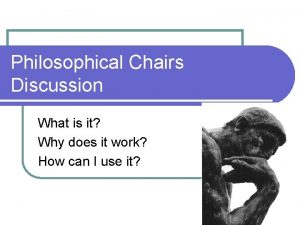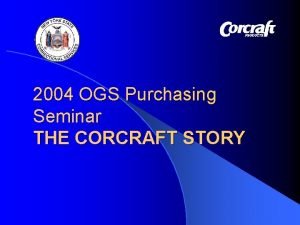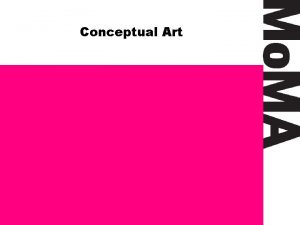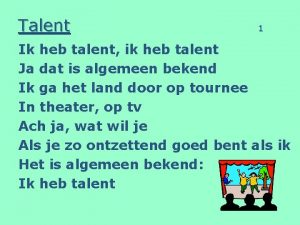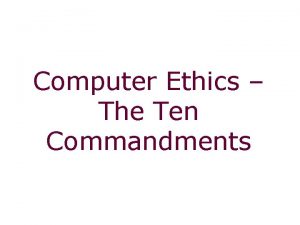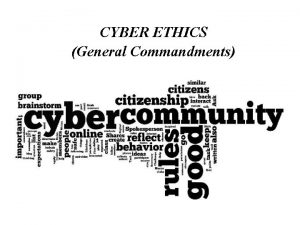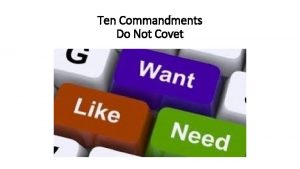Talent Equity Consultants 8 Commandments for Effective Chairs






























- Slides: 30

Talent Equity Consultants 8 Commandments for Effective Chairs Practices of Board Leaders across Countries

Global Chair Research Project 200 CHAIRS from 33 COUNTRIES

Board Chairs’ practices across Countries Research Project Looking at chairs’ work in 9 countries: Belgium (Anne Samyn) Denmark (Steen Buchreitz Jensen, Aleksey Ulanovsky) Italy (Anna Zanardi) The Netherlands (Mik van den Noort) Russia (Ekaterina Ryasentseva, Veronika Zagieva) Singapore (Kai Fung Tan, Vincent Domine) Switzerland (Vincent Domine) Turkey (Hande Yasargil, Aleksey Ulanovsky) The United Kingdom (Stanislav Shekshnia)

Research Scope 9 Countries § § 80 Chairs 70 Shareholders Directors CEOs Research questions: What is the scope of the chair’s work in different contexts? What practices chairs use to get their job done? How the job of the chair is evolving? What makes a chair effective?

Unexpected Finding • Cultural differences are lesser differentiators than other factors • Company: ownership, life cycle, sector • Board: size, composition, prior relationships • Chair: relation to ownership, experience, personality • Effective chairs overcome cultural norms when required

Chair’s Roles across Countries Leading the board Representing the board in relations with shareholders Other Representing the board in relations with CEO

‘Global’ Trends • Chairs will put in more hours and will have fewer directorships; we will see more ‘exclusively committed’ board leaders. • Most chairs will continue to come up through the CEO school, but more will have backgrounds in consulting, academia, and technology. • Technology will slowly but steadily conquer the boardroom. In the next decade most boards will go digital and many board meetings will become virtual. • Much one-to-one communication will move online. By 2025, technology will become a stable platform for chairs’ leadership. • The number of female chairs will increase, but slowly

What makes a chair effective in this context?

8 Commandments for Effective Chairs 1. What got you here will not make you effective – be the guide on the side 2. Don’t build a team – enable teaming 3. Don’t sweat the boardroom – work other spaces 4. Don’t worry about the solution – organize logistics 5. Don’t try to measure outputs – master inputs 6. Don’t be the CEO’s boss – represent the board 7. Don’t be a player - be a representative with shareholders 8. Don’t assume you will not need to get your hands dirty – book some slack time

What Got You Here – Attributes of Successful CEOs Ambition and resultsorientation Boldness, decisiveness, and risk-taking Action-orientation Organizational-centrality

Attributes of Effective Chairs • Restraint • Patience • Availability • “Soft” and “hard” skills • Listening, speaking, questioning, framing and reframing • Systemic thinking and business acumen • No need for industry knowledge

Don’t Build a Team – Enable Teaming

Don’t Build a Team – Enable Teaming Prof. Amy Edmondson, Harvard Business School

What is TEAMING? ‘Teamwork on the fly’ ‘Effective collaboration among professionals without forming traditional teams’

3 E-Leadership and Teaming at the Board • Engaging • Enabling • Encouraging

Leadership Function Leading the Board Chairs’ Practices “I tell every candidate up front – if you are not ready to commit 40 days of your time to this board, let’s stop here. ” (Switzerland) Engaging “I ask every new director to sit down with every other board member before her first meeting. ” (Singapore) “Dinner with non-executive directors is a good way to re-engage them on the eve of a board meeting. ” (The UK) “I ring every director and ask if they are happy with the next meeting’s agenda or would like to change something. ” (Denmark) Enabling “I make sure it attractive for board members to come to the Netherlands taking care of all arrangements during their stay. ” (The Netherlands) “I need to think very clearly about whom I ask to talk first and who talks last about the specific topics. Who is irritated by who or what? Who is brooding about what? I need to be very alert about recognizing body language. ” (The Netherlands) “I start with an informal in-camera session. I want to know what goes on in their minds and what their current concerns are. It is a way for all of us to clear our hearts and minds before the official meeting starts. ” (Belgium) “I try to take as little room as possible. My task is to help others to speak their minds. ” (The UK) “Asking questions in a Socratic way, even if you know the answer, is a good way to get other points of view to come alive. ” (Denmark) “We close every board meeting with a short reflection session. I ask each director three questions: ‘What went well? What did not go so well? What we could have done differently? ’” (Russia) Encouragin g “Once every year, we go to an off-site dedicated to improving board dynamics. With the help of a facilitator we brainstorm how to improve and try out new approaches. ” (The UK) “Once a year I invite every board member for lunch and we talk about what she/he wants to discuss. ” (The UK)

Don’t Sweat the Boardroom – Work other Spaces ‘ 80 percent of what gets done in the boardroom is determined by what happens outside of it’ Jack, Chair from Singapore

Don’t Sweat the Boardroom – Work other Spaces Chair’s practices: – Planning • Board cycle • Board meeting’s agenda – Preparation • Committees • Board materials • Chair’s preparation – Follow up – Communication

Don’t Worry About the Solution – Organize Logistics ‘Lookers-on see most of the game’ Chinese proverb ‘‘For a chair to enable a board to make good decisions it’s better to start with ‘an empty head’, e. g. to have no view on the subject matter’ Michael, chair from UK

Don’t Worry about the Solution – Organize Logistics Practices: – – Planning a discussion process not a decision Formulating explorative questions Framing a discussion question Avoiding subject-matter discussions with CEO before the board – ‘Three alternatives’ rule – Speaking the last

Don’t Try to Measure Outputs – Master the Inputs ‘The decisions our board makes today will shape the company for the decades to come. It is naive to think that we can find a metric or a set of metrics to apply at the end of the year to tell how effective the board has been. ’ Franz, Chair of a Swiss multinational

Board as a Black Box Inputs Board of Directors Outputs

on’t Try to Measure Outputs – Master the Inputs • Key inputs: – – – Board Agendas Materials Minutes Board process • Practices to understand measure the inputs: – Competency map – Periodic board evaluation, internal and external – Evaluation at the end of every meeting

Don’t be the CEO’s Boss – Represent the Board – Ensuring dynamic partnership between the board and the CEO: challenge and support – Making sure the board provides oversight, advice, mentoring – Feeding back to the board

Don’t Be a Player - Be a Representative with Shareholders

Don’t Be a Player - Be a Representative with Shareholders ‘Who am I to deal with a significant shareholder on equal terms? A part-time board chair getting an equivalent of USD 100, 000 a year. Not serious. But when the whole board speaks to them, they listen. So I always remind shareholders that I am an interface between them and a board. I never speak my mind; it’s the collective voice of the board of directors they are hearing. ’ Independent Chair, Denmark

Don’t Be a Player - Be a Representative with Shareholders – – – Speaking with the board’s voice Proactivity in informing and being informed Protecting boardroom from shareholders’ disputes Inviting shareholders to interact with the whole board Ensuring fairness and transparency

Don’t Assume You will not Need to Get Your Hands Dirty – Book Some Slack Time

Don’t Assume You will not Need to Get Your Hands Dirty – Book Some Slack Time

Teşekkür ederim 谢谢你 Grazie Bedankt Thank you Merci Dank u Спасибо Tak Danke schön
 Philosophical chairs rules
Philosophical chairs rules Philosophical chairs sentence starters
Philosophical chairs sentence starters Minimal art 1960
Minimal art 1960 Hook bolt in railway
Hook bolt in railway Horizon europe mission board chairs
Horizon europe mission board chairs Philosophical chairs topics
Philosophical chairs topics Corcraft lockers
Corcraft lockers Wearable chairs
Wearable chairs Planmeca compact i
Planmeca compact i Flat footed rails
Flat footed rails What did goldilocks see in the bedroom
What did goldilocks see in the bedroom Avid philosophical chairs
Avid philosophical chairs Philosophical chairs rules
Philosophical chairs rules Kieron's cats solution
Kieron's cats solution Mun policy statement
Mun policy statement One and three chairs
One and three chairs Ucla endowed chairs
Ucla endowed chairs Philosophical chairs topics
Philosophical chairs topics Egg för emanuel
Egg för emanuel En lathund för arbete med kontinuitetshantering
En lathund för arbete med kontinuitetshantering Atmosfr
Atmosfr Rutin för avvikelsehantering
Rutin för avvikelsehantering Biologiska arvet
Biologiska arvet Byggprocessen steg för steg
Byggprocessen steg för steg Myndigheten för delaktighet
Myndigheten för delaktighet Presentera för publik crossboss
Presentera för publik crossboss Var 1721 för stormaktssverige
Var 1721 för stormaktssverige Förklara densitet för barn
Förklara densitet för barn Att skriva debattartikel
Att skriva debattartikel Tobinskatten för och nackdelar
Tobinskatten för och nackdelar Tack för att ni lyssnade bild
Tack för att ni lyssnade bild

